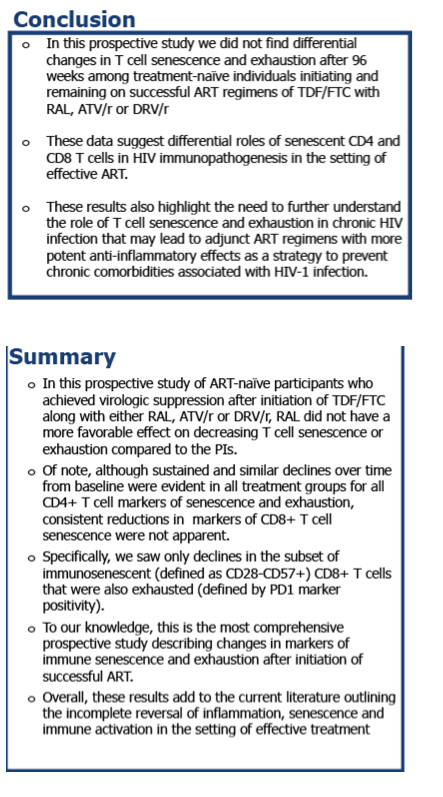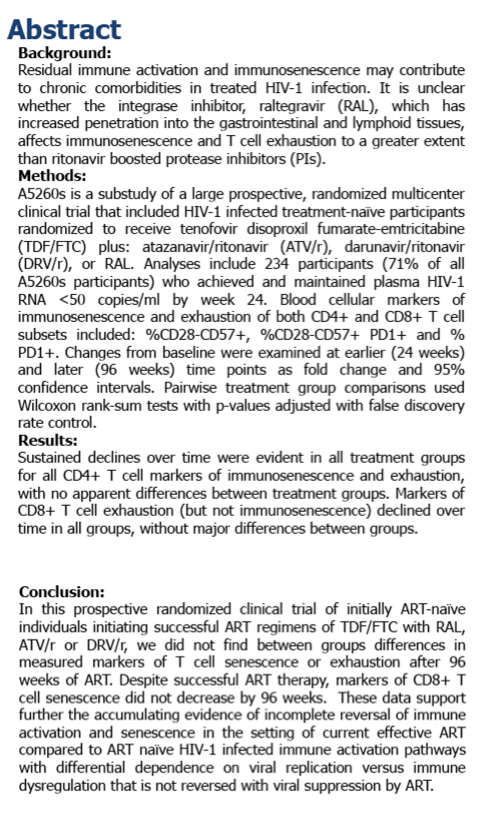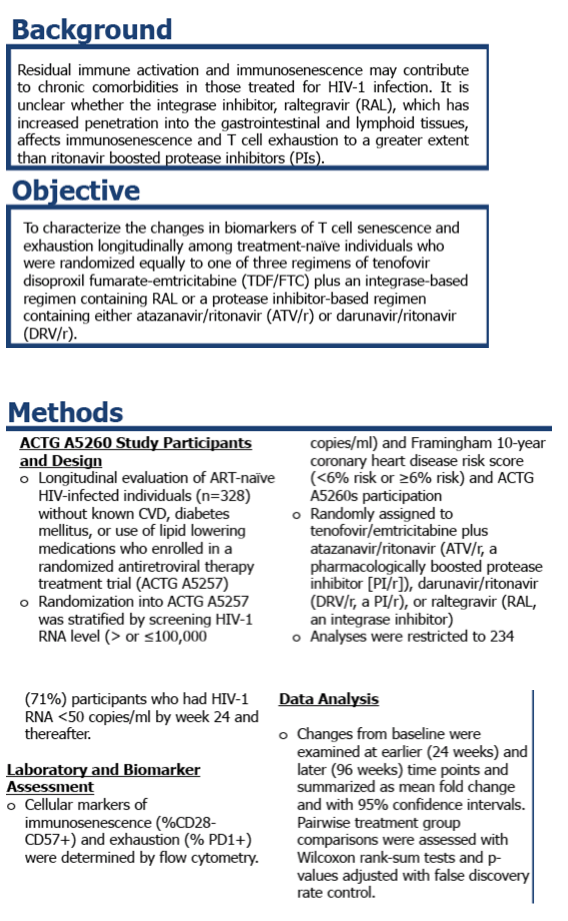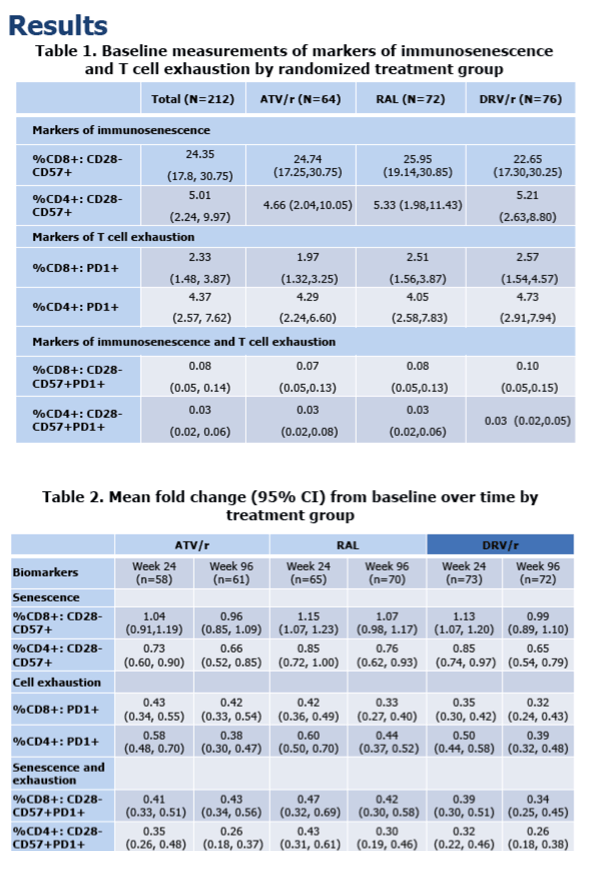 |
 |
 |
| |
Changes in markers of T-cell Senescence and Exhaustion With HIV Therapy
|
| |
| |
Download the PDF here
CROI 2016 Reported by Jules Levin
Theodoros Kelesidis1, Carlee Moser2, James H. Stein3, Todd T. Brown4, Thuy Tien T. Tran2, Heather Ribaudo2, Michael P Dube5, Robert Murphy6, Otto O. Yang1, Judith S. Currier1, Grace A. McComsey7
1. David Geffen School of Medicine at University of California - Los Angeles, 2. Center for Biostatistics in AIDS Research, Harvard T.H. Chan School of Public Health 3. University of Wisconsin School of Medicine and Public
Health, 4. Johns Hopkins University, 5. Keck School of Medicine at the University of Southern California, 6. Northwestern University, 7. Case Western Reserve University
"In this prospective study of ART-naïve participants who achieved virologic suppression after initiation of TDF/FTC along with either RAL, ATV/r or DRV/r, RAL did not have a more favorable effect on decreasing T cell senescence or exhaustion compared to the PIs."
"These data support
further the accumulating evidence of incomplete reversal of immune
activation and senescence in the setting of current effective ART
compared to ART naïve HIV-1 infected immune activation pathways
with differential dependence on viral replication versus immune
dysregulation that is not reversed with viral suppression by ART.
Residual immune activation and immunosenescence may contribute
to chronic comorbidities in those treated for HIV-1 infection."





Premature immunosenescence in HIV-infected patients on highly active antiretroviral therapy with low-level CD4 T cell repopulation
In summary, thymic dysfunction alters peripheral T cell homeostasis in patients with low-level CD4 T cell repopulation.
We propose a model with several different related mechanisms involved in premature immune senescence in HIV-infected patients with low-level CD4 repopulation on HAART. The understanding of such different mechanisms could help find effective strategies to prevent immune decay.
Our results showed a lower thymic activity in patients with low-level CD4 T cell repopulation, leading to a decline in CD4 T cell production. On the other hand, a higher activation along with a higher replicative senescence of CD4 T cells contributed to a higher rate of apoptotic CD4 T cells in this group of patients.
Changes in markers of T cell senescence and exhaustion with Atazanavir-, Raltegravir-, Darunavir-Based Initial Antiviral Therapy: ACTG 5260s
In this prospective study of ART-naïve participants who achieved virologic suppression after initiation of TDF/FTC along with RAL, ATV/r or DRV/r, RAL did not have a more favorable effect on decreasing immunosenescence or exhaustion compared to the PIs.
|
| |
|
 |
 |
|
|